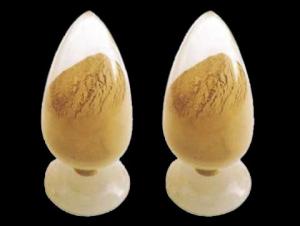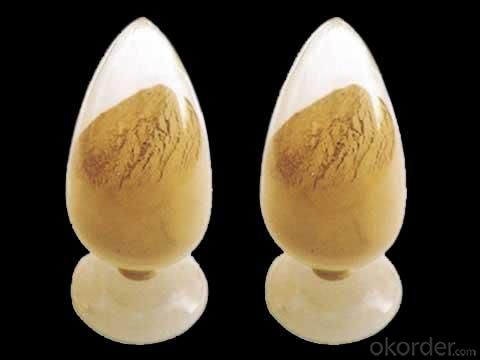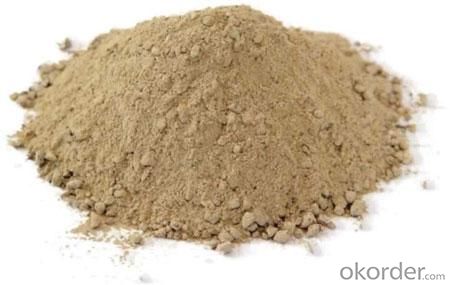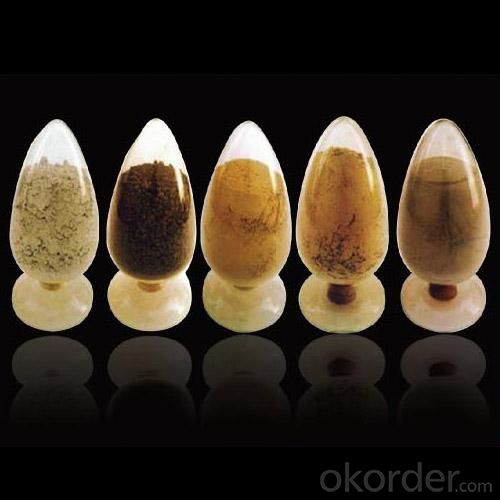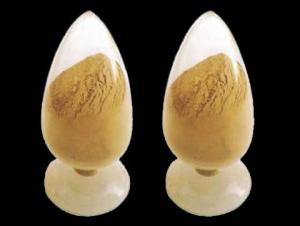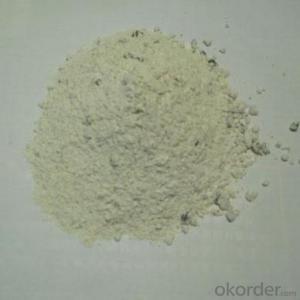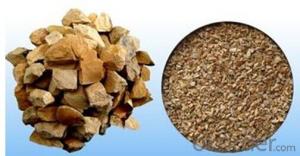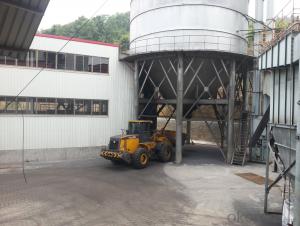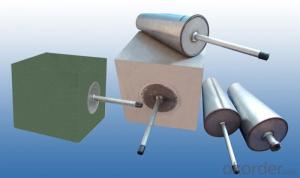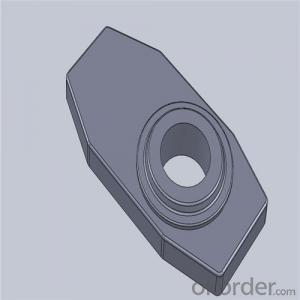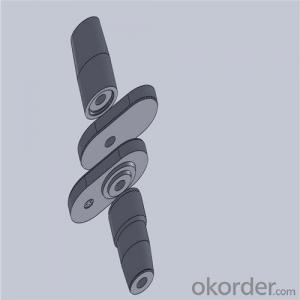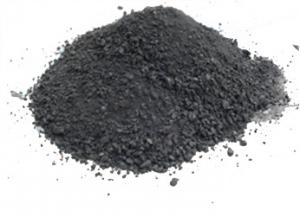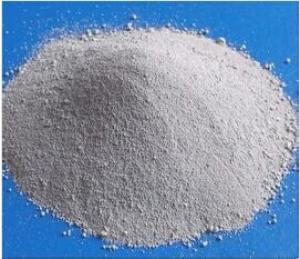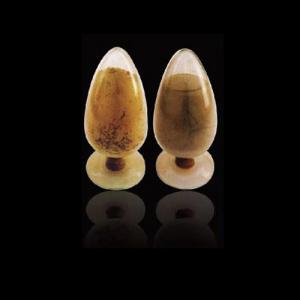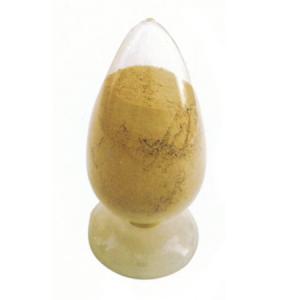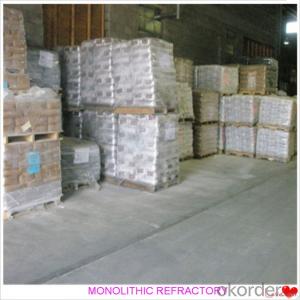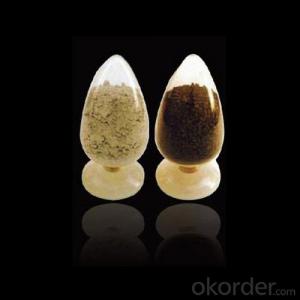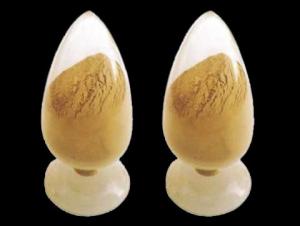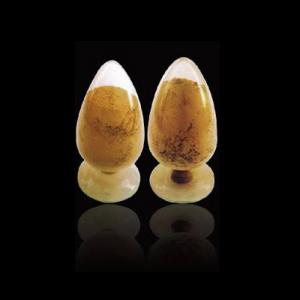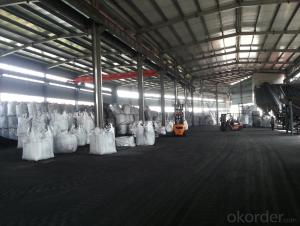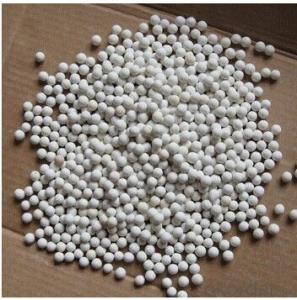Monolithic Refractories for Iron and Steel Industry Gunning Mix for EAF
- Loading Port:
- China Main Port
- Payment Terms:
- TT or L/C
- Min Order Qty:
- 2 Mt m.t.
- Supply Capability:
- 5000 Tons Per Month m.t./month
OKorder Service Pledge
OKorder Financial Service
You Might Also Like
General Information of Gunning Mix for EAF
ALRE gunning mix for EAF which is made strickly according to international standard is known for its excellent corrosion and scouring resistance of iron steel, long operating life and easy execution and mending.
Technical data of Gunning Mix for EAF
Item | Gunning Mix for EAF | ||
Al2O3 | % | ≥ | — |
MgO | % | ≥ | 86 |
CaO | % | ≤ | — |
Bulk density (g/cm3)≥ | 110℃×24h | 2.2 | |
1600℃×3h | — | ||
C.C.S. (MPa) ≥ | 110℃×24h | 60 | |
1600℃×3h | — | ||
M.O.R.(MPa) ≥ | 110℃×24h | — | |
1600℃×3h | 4.0 | ||
Max. service temperature(℃) ≥ | |||
Refractoriness (℃) | — | ||
Grain size distribution (%) | <3mm,≥90 <1mm,≥35 <0.074mm,≥20 | ||
Linear change after heating (%) | 0.0~0.4 ﹙1500℃×3hrs﹚ | ||
Application | Used for slag zone gunning of EAF | ||
Production line and Tesing Room of Gunning Mix for EAF
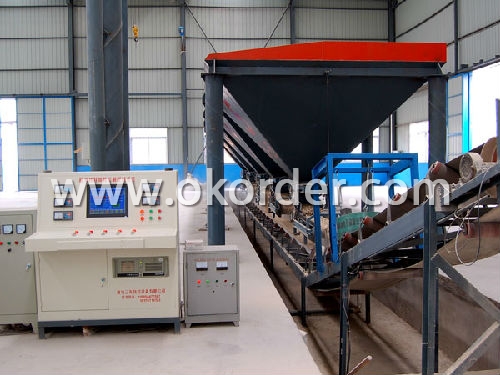
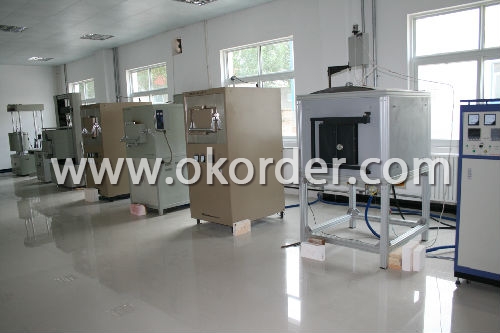
Feature of Gunning Mix for EAF
Excellent abrasive resistance performance
Easy execution and mending
Excellent corrosion and scouring resistance of iron steel
Application of Gunning Mix for EAF
ALRE gunning mix for EAF could be used widely for slag zone of EAF.
- Q: How do monolithic refractories resist abrasion in the iron and steel industry?
- Monolithic refractories, with their unique composition and properties, are specifically designed for the iron and steel industry to resist abrasion. Made from a single homogeneous material, they exhibit exceptional strength and durability when subjected to continuous abrasion. The high density of monolithic refractories is one of the key factors contributing to their abrasion resistance. These refractories are manufactured with tightly packed particles, resulting in a solid and compact structure. This density minimizes wear and tear caused by the constant movement of materials like iron and steel. Furthermore, monolithic refractories often contain high levels of alumina, known for its excellent resistance to abrasion. Alumina is a highly refractory material that can withstand high temperatures and mechanical stress without deteriorating. Its presence in monolithic refractories creates a protective layer that resists abrasion caused by the movement and impact of iron and steel particles. In addition, monolithic refractories can be designed with specific additives and binders that further enhance their resistance to abrasion. These additives may include silicon carbide, mullite, or zirconia, which are renowned for their superior mechanical strength and ability to withstand wear. The binders used in the manufacturing process also contribute to the refractory's integrity and its ability to resist abrasion by providing a cohesive structure. In conclusion, the combination of high density, alumina content, specialized additives, and binders makes monolithic refractories highly resistant to abrasion in the iron and steel industry. They can withstand the harsh conditions and constant movement of materials, ensuring long-lasting performance and efficiency in various applications within the industry.
- Q: How do monolithic refractories improve the efficiency of ladle and tundish preheating stations?
- Monolithic refractories play a crucial role in enhancing the efficiency of ladle and tundish preheating stations. These refractories are specifically designed to withstand high temperatures and thermal shocks, making them ideal for use in preheating applications. One key way in which monolithic refractories improve efficiency is by providing excellent heat insulation. These refractories have low thermal conductivity, meaning they minimize heat loss from the preheating station to the surroundings. As a result, more heat is retained within the ladle or tundish preheating station, leading to faster and more efficient heating of the vessel. Additionally, monolithic refractories offer superior heat retention properties. Once heated, these refractories have the ability to store and release heat gradually over time. This characteristic allows for a more consistent and controlled heating process in the ladle or tundish preheating station. By maintaining a stable temperature, the refractories ensure that the vessel is heated uniformly and prevent thermal shocks that could lead to cracking or other damage. Furthermore, monolithic refractories have excellent resistance to chemical reactions and erosion caused by molten metals and slag. Ladles and tundishes are often exposed to corrosive environments, and the use of monolithic refractories helps to protect against degradation and extend the lifespan of the preheating station. This durability reduces the need for frequent maintenance and replacement, leading to cost savings and improved overall efficiency. In summary, monolithic refractories improve the efficiency of ladle and tundish preheating stations by providing excellent heat insulation, heat retention, and resistance to chemical reactions. These properties result in faster and more uniform heating, reduced heat loss, and increased durability of the preheating station. Ultimately, these benefits contribute to improved productivity and cost-effectiveness in the steelmaking process.
- Q: How are monolithic refractories used in the repair and maintenance of ladle and tundish covers?
- Monolithic refractories are commonly used in the repair and maintenance of ladle and tundish covers due to their excellent thermal resistance and durability. Ladles and tundishes are crucial components in the steelmaking process, and their covers play a vital role in the containment of molten metal and the prevention of heat loss. When ladle and tundish covers are subjected to high temperatures and thermal cycling, they can experience wear and tear, leading to cracks, spalling, or even complete failure. This is where monolithic refractories come into play. Monolithic refractories are unshaped refractory materials that can be easily molded and applied to the damaged areas of ladle and tundish covers. They can be cast, gunned, or sprayed onto the surface, allowing for quick and efficient repairs. These refractories are typically composed of a matrix material, such as alumina, silica, or magnesia, along with various additives and bonding agents. The specific composition depends on the application requirements and the severity of the operating conditions. The repair process begins by identifying the damaged areas of the ladle or tundish cover. Any loose or damaged refractory material is removed, and the surface is prepared for the application of the monolithic refractory. This may involve cleaning, roughening, or even preheating the surface, depending on the specific requirements. The monolithic refractory is then mixed with water or a suitable binder to form a workable consistency. It is then applied to the damaged areas using the appropriate method, such as casting or spraying. After application, the refractory material is allowed to dry and cure, typically through a controlled heating process. Once cured, the monolithic refractory forms a strong and durable lining that can withstand the high temperatures, thermal cycling, and chemical reactions that occur during ladle and tundish operation. It provides excellent thermal insulation, preventing heat loss and reducing energy consumption. Furthermore, monolithic refractories offer superior resistance to slag, metal penetration, and erosion, ensuring extended service life for ladle and tundish covers. They also have good thermal shock resistance, allowing them to withstand rapid temperature changes without cracking or spalling. In summary, monolithic refractories are essential in the repair and maintenance of ladle and tundish covers due to their thermal resistance, durability, and ease of application. Their ability to withstand high temperatures, thermal cycling, and chemical reactions ensures the integrity and efficiency of ladle and tundish operations in the steelmaking industry.
- Q: How do monolithic refractories resist high temperatures?
- Monolithic refractories are designed to resist high temperatures due to their unique composition and structure. These refractories are made from a single piece or material, unlike traditional refractory bricks that are composed of multiple pieces. The main reason why monolithic refractories can resist high temperatures is their high melting point. These refractories are made from materials such as alumina, silica, and magnesia, which have high melting points ranging from 1650°C to 2000°C. This means that they can withstand extreme temperatures without undergoing significant deformation or melting. Furthermore, monolithic refractories possess excellent thermal stability. They have low thermal conductivity, which means they can effectively insulate against heat transfer. This property allows the refractories to maintain their structural integrity even when exposed to rapid temperature changes or thermal shocks. In addition, the monolithic nature of these refractories provides them with enhanced resistance to thermal stress. Unlike traditional refractory bricks, monolithic refractories do not have joints or seams that can be vulnerable to thermal expansion and contraction. This makes them more resistant to cracking or spalling when subjected to high temperatures. Moreover, monolithic refractories can form a protective layer or slag on their surface when exposed to high temperatures. This slag acts as a barrier and prevents direct contact between the refractory material and the hot gases or molten metals, reducing the risk of chemical reactions or corrosion. Overall, the combination of high melting point, thermal stability, resistance to thermal stress, and the ability to form protective slag makes monolithic refractories highly effective in resisting high temperatures. They are widely used in various industries, including steel, cement, glass, and petrochemical, where they are exposed to extreme heat conditions.
- Q: What are the common failure mechanisms of monolithic refractories?
- Some common failure mechanisms of monolithic refractories include thermal shock, spalling, erosion, chemical attack, and mechanical stress. These factors can weaken the refractory material, causing it to crack, break, or deteriorate over time.
- Q: How do monolithic refractories improve the performance and efficiency of iron and steel production?
- Improved performance and efficiency in iron and steel production are achieved through the utilization of monolithic refractories. These specialized materials are designed to withstand extreme temperatures, chemical reactions, and mechanical stresses, making them ideal for high-temperature industrial processes. A key contribution of monolithic refractories is their ability to provide a protective lining for furnaces, kilns, and other equipment used in iron and steel production. Their superior heat resistance ensures that the underlying structure is shielded from the intense heat, preventing any detrimental effects on the equipment. This results in reduced downtime, extended service life, and ultimately, enhanced overall efficiency. Furthermore, monolithic refractories play a crucial role in improving thermal efficiency during the production process. By minimizing heat losses, these materials help maintain a stable and uniform temperature distribution, thereby enhancing the energy efficiency of the system. Precise temperature control is of utmost importance in iron and steel production to achieve the desired metallurgical properties of the final product. Additionally, monolithic refractories exhibit excellent resistance to chemical corrosion, erosion, and slag attacks. They act as a barrier between the molten metal and the refractory lining, preventing unwanted reactions and material degradation. This preserves the integrity of the furnace lining, reducing the need for frequent repairs or replacements. Consequently, it leads to increased productivity and long-term cost savings. Moreover, the ease with which monolithic refractories can be shaped, repaired, or replaced is another advantage. Unlike traditional brick refractories, which require labor-intensive and time-consuming installation, monolithic refractories offer a more flexible and efficient application. Their flexible nature allows for easy repair of damaged areas, minimizing downtime and ensuring uninterrupted production. In summary, the utilization of monolithic refractories significantly enhances the performance and efficiency of iron and steel production. These materials provide a protective lining, improve thermal efficiency, resist chemical corrosion, and offer easy installation and repair options. By optimizing the production process, monolithic refractories contribute to higher productivity, reduced downtime, and increased cost-effectiveness in the iron and steel industry.
- Q: What are the recommended curing and drying procedures for monolithic refractories?
- The recommended curing and drying procedures for monolithic refractories typically involve a gradual heating process to ensure proper bonding and removal of any moisture. This process usually starts with a preheat at a low temperature to eliminate any residual water, followed by a controlled temperature increase over a specific duration to achieve the desired strength and stability. It is essential to follow the manufacturer's guidelines and consider the specific composition and thickness of the refractory material to ensure optimal curing and drying.
- Q: How can the lifespan of monolithic refractories be extended in the iron and steel industry?
- Various measures can be taken to extend the lifespan of monolithic refractories in the iron and steel industry. Firstly, it is crucial to ensure proper installation and maintenance of the refractories. This includes ensuring correct shape and size for the specific application, as well as using appropriate installation techniques and materials. Regular inspections should be carried out to identify any signs of wear or damage, and immediate repairs or replacements should be made to prevent further deterioration. To significantly prolong the lifespan of monolithic refractories, effective heat management practices should be implemented. This involves monitoring and controlling temperature gradients within the refractory lining to prevent thermal shock and excessive thermal cycling. Adequate insulation and cooling systems should also be in place to maintain a stable and controlled environment. Proper handling and operation of equipment and processes also contribute to extending the refractory lifespan. Avoiding sudden temperature changes, minimizing mechanical stress and impact, and employing appropriate operating procedures can help reduce wear and tear on the refractories. Utilizing advanced refractory materials and technologies can further enhance the lifespan of monolithic refractories. High-performance and specialized refractories, such as advanced ceramics or specialized coatings, provide increased resistance to thermal and chemical degradation, ultimately extending their lifespan. Lastly, continuous research and development efforts should be undertaken to explore innovative solutions for refractory longevity in the iron and steel industry. Collaborating with suppliers, experts, and industry partners can help identify and implement new technologies and techniques that improve the durability and performance of monolithic refractories. In summary, extending the lifespan of monolithic refractories in the iron and steel industry requires proper installation and maintenance, effective heat management, careful handling and operation, utilization of advanced materials, and ongoing research and development. By implementing these strategies, the iron and steel industry can optimize refractory performance, reduce downtime, and minimize costs associated with frequent replacements.
- Q: What are the typical applications of monolithic refractories in blast furnaces?
- Due to their unique properties and applications, monolithic refractories find extensive use in blast furnaces. These refractories consist of a single, uniform material that can be shaped and installed in various forms without the need for joints or seams. This particular characteristic makes them highly suitable for lining and safeguarding the different zones of a blast furnace. One common use of monolithic refractories in blast furnaces is for lining the hearth, which is the lowermost part of the furnace where molten iron and slag collect. Monolithic refractories are employed to create a sturdy and heat-resistant lining capable of withstanding the extreme temperatures and chemical reactions that occur in this region. Another frequent application is the lining of the bosh, the transitional zone between the hearth and the blast furnace's stack. The bosh is subjected to elevated temperatures and mechanical stresses resulting from the movement of burden materials. To ensure its longevity and efficiency, monolithic refractories with high thermal shock resistance and abrasion resistance are utilized. Monolithic refractories are also utilized for lining the stack and the tuyere area. The stack refers to the vertical portion of the furnace where iron ore reduction takes place, while the tuyere area is where hot air blast is injected into the furnace. Both these areas necessitate refractories capable of withstanding high temperatures, chemical reactions, and mechanical stresses. Moreover, monolithic refractories find application in the repair and maintenance of blast furnaces. Due to the harsh conditions inside the furnace, the lining may deteriorate over time. Monolithic refractories can be easily applied as patching materials to restore the lining's integrity and extend the furnace's lifespan. In summary, monolithic refractories play a crucial role in blast furnaces by lining the hearth, bosh, stack, and tuyere area, as well as facilitating repairs and maintenance. These refractories offer exceptional thermal shock resistance, abrasion resistance, and durability, making them indispensable for the efficient operation of blast furnaces in the iron and steel industry.
- Q: What are the benefits of using monolithic refractories in the iron and steel industry?
- Monolithic refractories offer numerous benefits in the iron and steel industry. Firstly, they provide excellent thermal insulation, reducing heat loss and improving energy efficiency in furnaces and other equipment. Secondly, monolithic refractories have superior resistance to high temperatures, ensuring prolonged service life even under extreme conditions. Additionally, their flexibility allows for easy installation and repair, reducing downtime and maintenance costs. Moreover, monolithic refractories have enhanced chemical resistance, protecting against corrosive and reactive substances commonly found in iron and steel production. Overall, the use of monolithic refractories enhances productivity, extends equipment lifespan, and reduces operational costs in the iron and steel industry.
1. Manufacturer Overview
| Location | Henan, China |
| Year Established | 2007 |
| Annual Output Value | Above US$ 200 Million |
| Main Markets | North America;Asia;Western Europe;Africa;Russia;Middle East |
| Company Certifications | ISO 9001:2008 |
2. Manufacturer Certificates
| a) Certification Name | |
| Range | |
| Reference | |
| Validity Period |
3. Manufacturer Capability
| a) Trade Capacity | |
| Nearest Port | Tianjin |
| Export Percentage | 20% - 30% |
| No.of Employees in Trade Department | 10-20 People |
| Language Spoken: | English; Chinese |
| b) Factory Information | |
| Factory Size: | Above 150,000 square meters |
| No. of Production Lines | Above 10 |
| Contract Manufacturing | Installation guide, OEM Service Offered |
| Product Price Range | High; Average |
Send your message to us
Monolithic Refractories for Iron and Steel Industry Gunning Mix for EAF
- Loading Port:
- China Main Port
- Payment Terms:
- TT or L/C
- Min Order Qty:
- 2 Mt m.t.
- Supply Capability:
- 5000 Tons Per Month m.t./month
OKorder Service Pledge
OKorder Financial Service
Similar products
Hot products
Hot Searches
Related keywords
